#and a bunch more out there that aren’t from the trailblazer or people close to them
Explore tagged Tumblr posts
Text
I don’t think people talk about the fact Aha knows they’re in a game enough
Like. They and their followers have been shown breaking the fourth wall. Specifically in the Simulated Universe and with Sampo after Belobog.
The simulated universe is meant to, well, mimic the real universe so the genius society can learn about aeons and past events by simulating them. Which is why it’s so fitting that the simulated Aha realized they’re in a false universe so quickly. The real Aha has already climbed the world tree and witnessed the truth of their existence.
I’ve joked about them ascending to aeonhood because they watched a baby fall before, which is true. But a large part of their true elation comes from knowing they’re in a game. Nothing matters so they can truly do whatever they want. Why not just have fun? They can sow plenty of discord. They can turn a worm into an emanator. They can witness wars and just laugh and laugh. They know it’s all meaningless. That’s why watching everyone else try so hard to keep their fake universe alive is so funny to them.
And this is even shown through the Masked Fools. Sampo speaks directly to the camera and both he and Sparkle have referred to themselves as supporting characters. Their purpose is to put on a show and make the game more entertaining. Would Belobog been as fun without Sampo coming in and making us collectively groan at him obviously trying to scam people? Would Penacony’s events or ending be as mysterious or shocking without Sparkle’s meddling behind the scenes? Penacony would have ended with a pretty boring party if not for Sparkle’s antics.
Honkai star rail needs characters you can laugh at, groan at, and poke fun at. The elation is delighted to be the game’s jester, poking fun at their false universe and the ones outside witnessing it.
#the elation fascinates me#because in a lot of the past events they’ve just. been there#making things more chaotic#and I love to think the meme references in hsr are from aha’s influence too#because there are a ton of pop culture references#but there is also the theory that maybe earth or the source material from those references exists in universe#I mean. Welt is canonically from there#and most of the references come from the trailblazer#so it can be believed they were just taught about Earth’s pop culture by welt#but there’s also the red/blue pill matrix reference#and the npc Star Wars reference#and a bunch more out there that aren’t from the trailblazer or people close to them#so I’d like to think Aha has a hand in that#ALSO in their databank entry Aha rickrolls you#so I think that counts towards that theory#honkai star rail#hsr#the elation#aha the elation#masked fools
55 notes
·
View notes
Text
Negrito: Race In The Latino Community
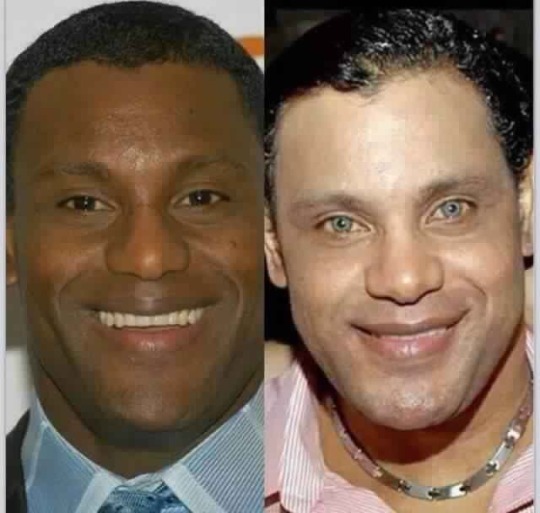
I had lots of nicknames growing up. Bolita (little ball) when I was a toddler because I was round. Jun (short for Junior), because I share a name with my dad. But the monikers I heard most from my mom and extended family were Negro (black), Negrito (little black) or Negrolo (black something or other). Notice a pattern?
As the darkest person in my Puerto Rican family, that’s how my loved ones would address me. It’s a common practice in Latino cultures. Identifying someone by their color, frowned upon in politically correct, modern society, has morphed into a term of endearment among racially diverse Latinos. Or so it seems.
Despite the wide range of hues within Latino culture that would suggest an evolved view of skin color, these societies are just as racist as any dusty mid western town full of red cap wearing “Americans.”
When a black South African, Zonzibini Tunzi, beat out Ms. Puerto Rico for the ridiculous Ms. Universe crown, the supervisor for the Island’s Education Department called the winner, “La prima de Shaka Zulu.” It means Shaka Zulu’s cousin. You know, the legendary African military leader.
In case you were wondering, there is no relation.
In 1937, Dominican dictator Rafael Trujillo had forty thousand Hatitian migrants massacred to “whiten” the population of the Caribbean nation. Sixty years later, every Dominican in the world hailed the dark skinned Sammy Sosa as one of their own when he chased Babe Ruth’s legendary home run record.
And now — twenty years after that — Sammy Sosa is white.
In the eighties, my friends and family referred to African American people as “Morenos” (Dark Skinned) or “Cocolos” (a term originating with a dark skin group of people in The Dominican Republic.) We were all living in the same impoverished, dilapidated neighborhood together, but never felt the same. There was always an us against them attitude. We often felt as if we needed to fight for respect within our own neighborhood while buying into media perceptions of what it meant to be black and brown. And what we saw around us everyday did little to give us faith in ourselves or our darker brethren.
But I could blend in anywhere — while feeling comfortable nowhere. I belonged to a light skinned (except for me and my dad) Puerto Rican family growing up in a black neighborhood but I found myself relating more to white culture. While the Cosby Show was number one, I watched Family Ties. While kids were listening to Chuck D or KRS 1, I was head banging to Guns and Roses. I hated baggy clothes, preferring tight jeans and t-shirts. But I didn’t feel like I was rebelling - I just liked what I liked, and got plenty of shit for it.
To me, the Cosby show was bullshit. That’s not how it was for the black and brown people I knew. It was fantasy. Family Ties I had seen play out before my own eyes at white friends’ homes with cookie cutter lives that seemed perfect (spoiler alert: they weren’t). I wanted what they had so badly — peace of mind and enthusiasm for the future — and I wasn’t finding it where I lived.
I also hated my brother at the time (who I love to death) and wanted to be the opposite of him. He was a thug who always gave my parents headaches. He set a terrible example for his little brother while constantly asserting the fact that he was six years older and wiser. Once I stopped idolizing him, I detested everything he stood for. He has long since proven me and the old neighborhood wrong.
It took me years to become as secure as I am, but even now I get shit from people in my life. I’ve embraced my heritage and have ensured that my five year old daughter does the same. But when my parents hear my daughter speak proper Spanish without a Puerto Rican accent, they make fun of us. She’s been attending a Spanish speaking school since she was two. Her mother and I have attempted to be consistent with the dialect we use with her. That means she actually rolls her r’s and doesn’t sound like she’s gonna hock a loogie when she says “carro” or “perro.” My family thinks it’s fucking hilarious.
But it’s not just family. In a recent conversion with an old friend who had just retired from the police department, he called me an “Oreo.” Black on the outside and white on the inside. This guy is in his fifties. I chuckled when he said it, but haven’t returned his calls since.
The thing is, I know he was just fucking around. He himself is of mixed race and sounds like an Irish American with a Brooklyn accent, but looks Japanese. But there is something about police perception of dark skin people, how we are supposed to sound, that bugged me about what he said.
There’s too much chuckling that goes on. Too much nodding. A former close friend of mine, who is half Puerto Rican and married to a dark skinned Dominican woman, once complained that a guy he knew had “niggered up” his car ( because he added shiny rims, window tint and other bells and whistles). It wasn’t the first time I heard him use the word. Each time it turned my stomach. I didn’t get it — I was his friend. Both me and his wife would have been denied access to white bathrooms and water fountains. Just because we did not identify with black culture didn’t mean we wouldn’t be exposed to the same bigotry and hatred. What the fuck? It was too much for me to overlook. We haven’t spoken in years.
There was an ugly song I remember from the old neighborhood back in the day. There were two versions:
“A fight, a fight, a nigger and a white, the black don’t win, we all jump in.”
Or,
“A fight, a fight, a nigger and a white, the white don’t win, we all jump in.”
Which one you sang depended on who you were with. Which “us” against which “them?”
I remember, as a teenager, going to the Sunset Park pool in Brooklyn with a bunch of Latino boys. On the way home, there was a group of black kids walking ahead of us. The group I was with, only one of whom was my close friend, started taunting them. They hurled racial epitaphs and threats at the black kids for being in their neighborhood. I was silent and utterly confused.
As a kid, it was actually my one close white friend, Jesse, who was the least racist kid I knew. He might have been the most genuine friend I ever had. I stopped returning his calls because I didn’t trust his friendship. Not because of anything he did — My negative view of myself kept me from believing that he really wanted to be my friend. Why would he? He was from a great family that lived in a beautiful house and valued the things that mattered to me but weren’t for me.
When I hung out with Jesse’s friends, the chip on my shoulder was always ready to bash someone over the head. At a party in some kid’s basement, someone spilled a drink. The host, an Italian kid that I didn’t know, asked me to help clean it up. I told him to go fuck himself. Then he asked me, “What are you?”
The party ended when I dragged him down a staircase and started beating him down before being pulled off and barely escaping the awaiting mob. I am my brother’s brother, after all.
So even though I felt like a Martian in my own neighborhood and knew I wanted better, I didn’t think I belonged on the other side either. I was stuck in this bizarre place where the only role models I had were Roberto Clemente, Eric Estrada and Slater. I never knew anyone else successful that looked like me. At the same time it seemed everyone around me was determined to make sure I never forgot where I belonged.
When I was twelve years old, I refused to attend my zone school because it had a reputation for being the worst in the city. It wasn’t my parents that refused, it was me. I told my mom and dad I would not go to junior high unless they transferred me. What if I hadn’t done that?
As it turns out, the school I ended up going to (because my dad used a friend’s address) was in a good part of town and was the best public education I ever experienced. The work was so advanced that I went from being one of the smartest kids in class to struggling. I actually had to study — something I never had to do much of and found excruciatingly boring. At that new school, I felt like the bad boy. The outcast. The kid that didn’t quite belong and couldn’t keep up.
My grades suffered that year, and when I transferred to a another school, I wasn’t placed in the gifted program for the first time in my scholastic career. I petitioned the principal and pleaded my case, explaining the difficult circumstances of the previous year and promising that I would shine in his “7SP“ class, which got to skip the eight grade and go straight to “9SP” in the fall. Like when I refused to go to that war zone of a school, I once again stood up for my own education. I was thirteen years old.
The work that year was far easier than what I had learned at the other school. I breezed through. The kind of disparity that existed between the two public middle schools I attended is indicative of the subpar education that children of color receive within what is supposed to be one school system. Kids in bad schools aren’t exposed to the same world that their crosstown rivals are and are ill prepared for the reality that awaits — be it a college admissions exam or the job market. Those who do not take it upon themselves to find opportunities for advancement can’t rely on working parents with little time or education to advocate for them. They are left with shitty choices and no one to champion their cause.
The scourge of poverty and racism is further sullied by the structural hierarchy of “shade” in communities of color. In the Autobiography of Frederick Douglass, the trailblazing abolitionist and former slave writes of the preferential treatment lighter slaves received, even among the others in bondage. Proximity to whiteness, then and now, is proximity to power and privilege.
In the late 1700’s, Spain instituted the process of gracias al sacar. Mixed race people could purchase a decree that converted them to white. One such royal decree granted to Cuban Manuel Baez in 1760 says that it erased “the defect that you suffer from birth and leave you able and capable as if you did not have it.” Ain’t that some shit.
Alice Walker coined the term “colorism” in her book, “In Search of Our Mother’s Garden”. She describes “prejudicial or preferential treatment of same-race people based solely on color.” Research has shown that skin tone affects the outcome of job interviews, court cases and elections. This is not a secret among people of color. They grow up believing that the whiter they look, the easier they’ll have it.
How does that make a kid feel who wants so badly to get ahead in life but has the mirror, the media and the world outside his window saying he doesn’t stand a chance? As if even after you do all the work and get to the finish line, the tape will be pulled back another few feet each time you stretch to get across. The life you want will be just out of reach, no matter how long or how fast you run.
There has been a delusion among some that because we’ve had a black president, hip hope rules the world and the Rock is the world’s biggest movie star, racism doesn’t exist anymore. There are people of color in positions of power and prestige, but they are few and far between. There just hasn’t been enough time for all the seeds of opportunity that were only planted a generation or two or three ago to compete with those who have seemingly inherited an eternity of racial privilege. Just because so many people fought for and finally earned some basic human rights doesn’t mean the playing field has been leveled.
The destruction of the long standing racial hierarchy is a challenging ongoing project that the world must decide to address together. The perpetuation of negative stereotypes of black and brown people is not only meant to strike fear in every suburban household, but to reinforce in the mind of the oppressed their role in society. Centuries of subjugation have purposefully convinced young men and women of color that they are born with an inherent disadvantage. Then, once their will to fight was clear, the oppressors barked that those they once lorded over should be grateful to simply be out of their chains.
It is up to people of color, whether African American, Latino, West Indian, or any other subdivision of “black” that may exist, to burn down the old models. The carefully calculated lie that “whiteness” is more attractive, desirable or indicative of ability must be deleted from our main frame. We must believe we are just as capable, because we obviously are. We must know that we have the opportunities, even if we have to work harder for them. And we cannot fight among ourselves, to the delight of those that would sooner see us dead, in jail or all together erased from the annals of history.
With dog whistles long having been discarded in favor of bull horns, the paper thin veil has been lifted from our union. In a country already in pieces, further division because of infighting is not something people of color, no matter their shade, can afford.
3 notes
·
View notes
Photo
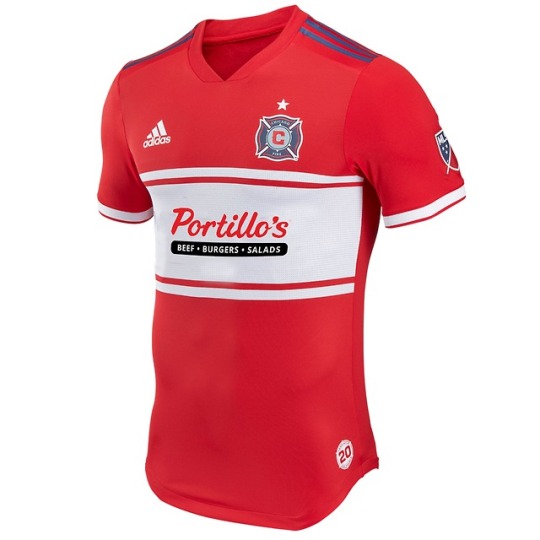




2018 MLS Kit Branding Reimagined
The 2018 Major League Soccer season is nearly underway. It’s been a long offseason and we’re hyped to have it back.
Our friends Tap In have a lot of new, exciting MLS content coming this year on their guide, and in celebration of that, we decided to partner on a fun little project.
In a bid to add a little more personality to what is largely bland, impersonal sponsorship real estate on each kit, we reimagined every team’s jersey with something new in the middle of it. Some of these are local companies, others are prospective partners who have some fun link to the team, and others will probably just be arcane jokes that won’t land.
Nevertheless, we thought this was a fun way to bring a few of our favorite things together: Friendship, Photoshop & American soccer.
Please enjoy.
Atlanta United — Waffle House
An iconic southern restaurant with its roots in Atlanta, Waffle House is open 24/7, 365—and it’s the best. As Waffle House FC will tell you, this is a perfect sponsor for a team that’s tasty on and off the pitch. Their supporters never waver, refusing to shut off for even a single second when they pack the Mercedes-Benz Stadium. They aren’t afraid to do things their own way—which, yes, can sometimes get a bit messy ... but most of the time it’s spot on.
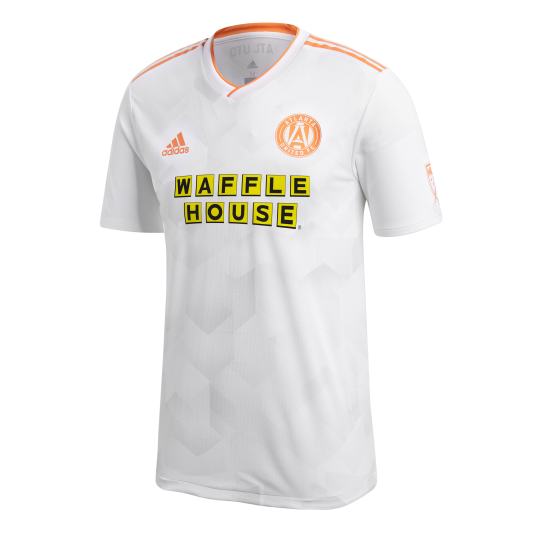
Chicago Fire — Portillo’s
Sorry, it’s important we let you know now that this is probably going to be a food-heavy list as we’re rather fond of eating.
Portillo’s is a Chicago institution known for its hot dogs, Italian beef sandwiches, and an extremely healthy, 100% good for any diet cheese sauce.
While the Fire aren’t yet a Chicago institution themselves, we hope one day pictures of Bob Bradley, Hristo Stoichkov & Ante Razov will line the walls of a Portillo’s near you.

Colorado Rapids — Coors
The beer with mountains on the can that turn from white to blue when it’s cold enough to drink...
The beer that you knew and loved so well from ages 21-24...
The beer brewed with spring water from the very same Rocky range you can spot from the Colorado Rapids’ 18,000-seat soccer specific stadium...
Headquartered in Golden, Colorado and responsible for some of the best nights of your life, we give you Coors on a Rapids jersey...
“Like if Chelsea’s 1994 kit did a gap year in America.”

Columbus Crew — Wendy’s
As the red-headed stepchild of MLS, this one kind of feels right. And the disappearance of the club would be just as sad as when Wendy’s (founded in Columbus) got rid of their spicy chicken nuggets.
#SAVETHECREW
(Note: The actual kit is pretty great and it’s honestly insulting that we did anything to it. We’re sorry.)

DC United — Geico
The Chevy Chase, Maryland-based Geico gecko had some good years there. We all liked him for a while. It was a good bit. But it got stale right around the time Freddy Adu left town. Since then, DC United and the gecko have struggled mightily to find consistent form. Here’s hoping they both find success this year from a new approach.
(And, hey, while we’re here: All the best to you, Freddy.)
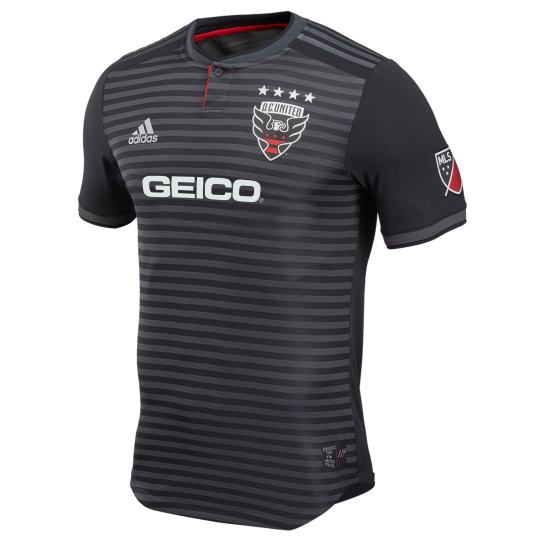
FC Dallas — Dr. Pepper
Everyone’s second team, Dr. Pepper, is a lifestyle in Texas. A Lone Star State-staple that pulls a talented 23-flavor squad from all-over—here’s to you Waco and Dublin— Dr. Pepper is an underrated, over-performing outfit with immense local significance … just like their imagined partner in Dallas.
A lot more to be proud of than their trophy cabinet will tell you.
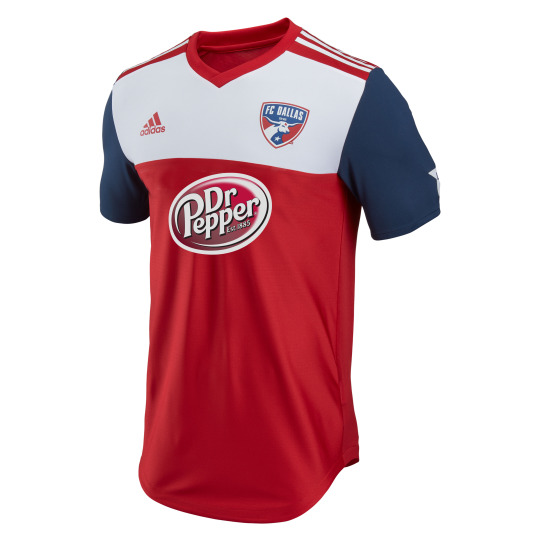
Houston Dynamo — Swishahouse
As Mike Jones, noted soccer superfan, Swishahouse OG, and Everyone’s Favorite Rapper from 2005, once said:
Let ‘em know: Houston Dynamo.
Good enough for us.

LA Galaxy — SpaceX
Space. Galaxy. You get it.
Headquartered a stone’s throw from the LA Galaxy’s stadium in Carson is SpaceX, Elon Musk’s influential private “outer space things” company as it’s scientifically known.
Much like MLS’s most famous and successful franchise, SpaceX is a trailblazer famous for its glamour and willingness to break the mold. This isn’t to say it’s always smooth sailing—for either—but at the end of the day they’re both respected for their vision and performance.
This crossover is too perfect and it’s something that we’ve seen terrific mockups of in the past (though we wish we knew who to credit!). Also worth a shout is this awesome piece from LA Galaxy Confidential, which mentions Tesla as a fun potential partner.

LAFC — The Boring Company
If the Galaxy is SpaceX, LAFC is The Boring Company.
Elon Musk’s newest endeavor is going to revolutionize Los Angeles by … making tunnels for cars? Oh, and by creating giant vehicles that can travel those tunnels and move lots of people at once … like a train. Hmm. The Boring Company seems like a well-backed but ordinary idea that lacks direction and distinction, with a lot of hype for reasons no one can really explain.
To be blunt, we haven’t really seen much to this point.
The Galaxy have sent a Tesla up into space and revolutionized how we build rockets... but LAFC have so far just made a bunch of flamethrowers and sold out their entire stock. So, we’ll see.
For now, all we’re really sure about is how much better their kit would have looked if they hadn’t put their sponsor in red.
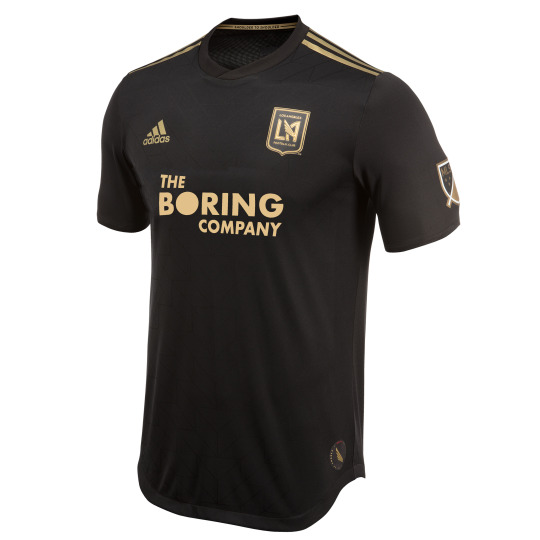
Minnesota United — Prince. Duh.
You can have a Dirty Mind or even be a little Delirious, but you’ll still end up right back here with no Controversy. You can wear it in a Little Red Corvette, in a Purple Rain, When Doves Cry or even put it on Bambi. With this kit, you’ll be a Sexy MF.
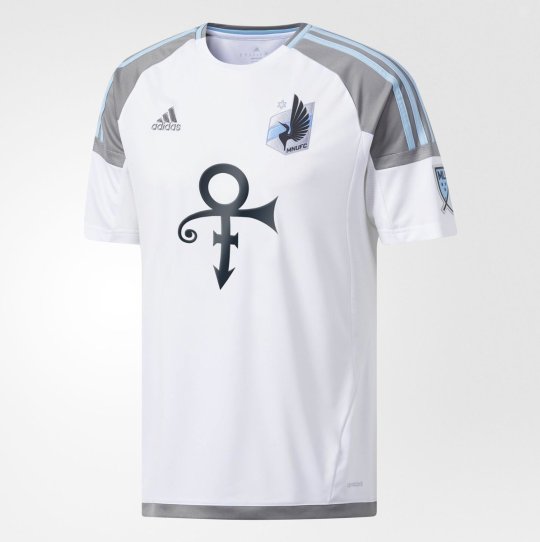
Montreal Impact — Cirque du Soleil
What’s wilder than benching Didier Drogba because you’re better without him? One person doing acrobatics on the head of another person while a third person flies through the air holding fire. In French.
Born and headquartered in Quebec, Cirque du Soleil is now the largest theatrical producer in the world. The Impact aren’t even the kings of Canada yet, let alone MLS, but this could be the year they flip their way to the top. Holding fire. In French.

New England Revolution — Sperry’s
Put those Sperry’s on to look the part and take your dad’s boat out on the water. You’ll be as close to Boston as Gillette Stadium and the deck of your boat will probably be as soft as the turf too.
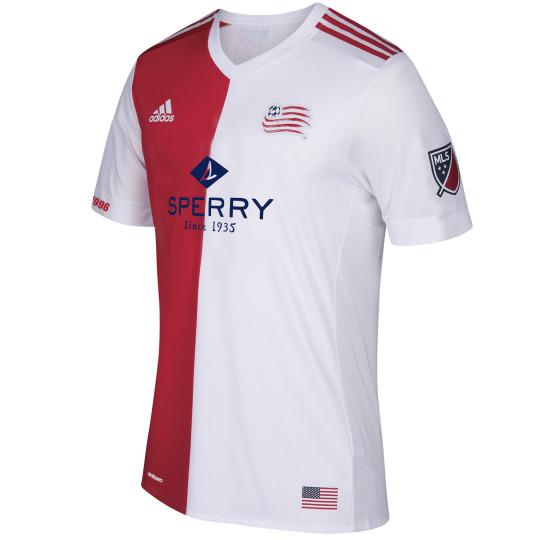
NYCFC — Sbarro.
The Michael-Scott-approved best pizza in New York. The only logical choice.

Sorry, sorry. We’re kidding. Don’t go to Sbarro.
...Let’s try that again...
NYCFC — WeWork.
Much like City Football Group, WeWork is trying to change a model.
For CFG, it’s football clubs. For WeWork, it’s the office space game. WeWork started in New York, born out of an inability to find affordable and available office space in the city—a problem NYCFC knows rather well—and now has an operation that spans across the globe.
Like CFG, it might not be your cup of tea, but it certainly works for a lot of people in NYC and has offered plenty of enterprising young professionals a place to grind. #JackHarrison
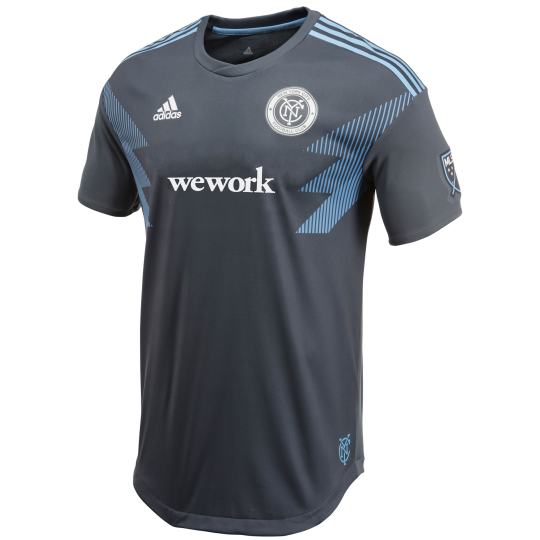
New York Red Bulls — Become the MetroStars again.
#Metros4Ever. That is all.
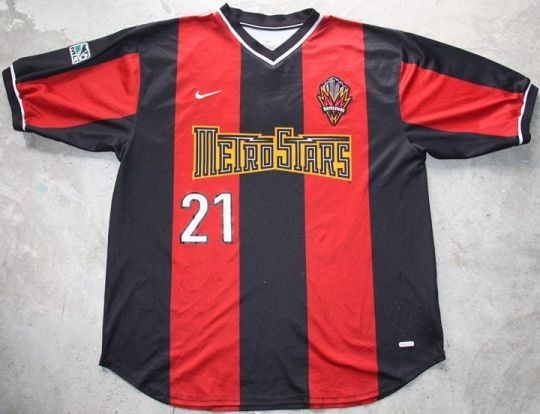
Orlando City — Publix
This one is a no-brainer.
Publix is an employee-owned supermarket chain that serves up some truly delicious food and has fans almost as fanatical as those found on The Wall in Orlando.
Floridians are vocally, passionately, sometimes a bit frighteningly #TeamPublix—and the same can be true for the way purple-clad City supporters get behind their squad.

Philadelphia Union — Wawa
If you know, you know. In their words:
“Wawa is your all day, every day stop for fresh, built-to-order foods, beverages, coffee, fuel services, and surcharge-free ATMs. The stores offer a large fresh food service selection, including Wawa brands such as built-to-order hoagies, freshly brewed coffee, hot breakfast sandwiches, built-to-order specialty beverages, and an assortment of soups, sides and snacks.”
Wawa 4 ever. #SheetzOUT

Portland Timbers — Powell’s
Powell’s City of Books is (supposedly) the largest independent new and used bookstore in the world. It is ginormous and fantastic and you should go if you’re ever in Portland.
We don’t know of any football clubs sponsored by book stores, but if there was ever going to be one, it would play in the Rose City.
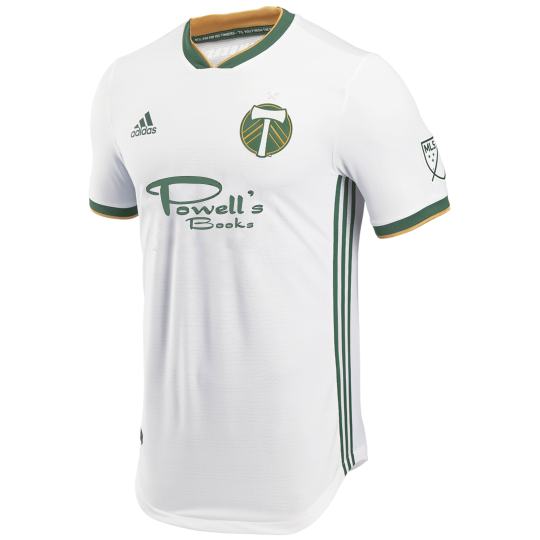
Real Salt Lake — High West
Tucked away in a state known primarily for its gorgeous vistas and as the home of the Mormon religion is a really wonderful distillery that will knock your socks off. It also comes with that beautiful mountain view, not unlike Rio Tinto Stadium.
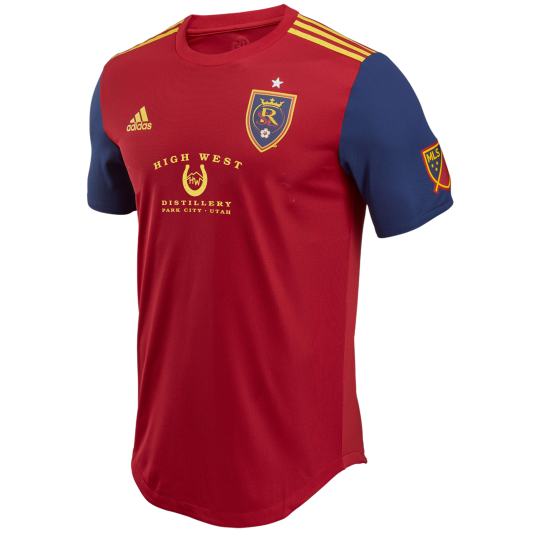
San Jose Earthquakes — Yahoo!
Nothing says cool like needing an exclamation point at the end of your name. Kind of like building a brand new stadium and needing to tell people that you have a really long bar.
As the kit sponsor of the Quakes during their two title runs, we think it’s time for Yahoo! to make a return. (Not sure anyone will use it, though.)

Seattle Sounders — Starbucks
Sorry, we’re those guys. Seattle gave the world Starbucks and we needed to see what that logo would look like on these new kits.
Plus, much like Starbucks invented coffee, the Sounders invented American soccer.

Sporting Kansas City — Hallmark
A proudly Kansas City company that is all about good vibes, with extensive Wizard of Oz involvement over the years.
That sounds a lot like Sporting KC to us—a team that needed a rough start in order to find its way. Much the same, Hallmark probably would have never become what it is today without extensive setbacks in its early years.
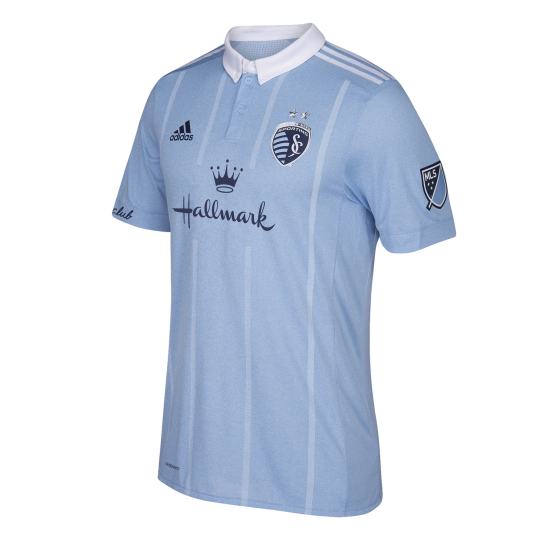
Toronto FC — Tim Hortons
Timbits and trophies: That’s what Toronto does. Nowadays, anyway.
We only had three Canadian teams to give the Tim Hortons love to, so we figured the toast of MLS deserves the world’s most lovely quick-service cafe and bake shop.
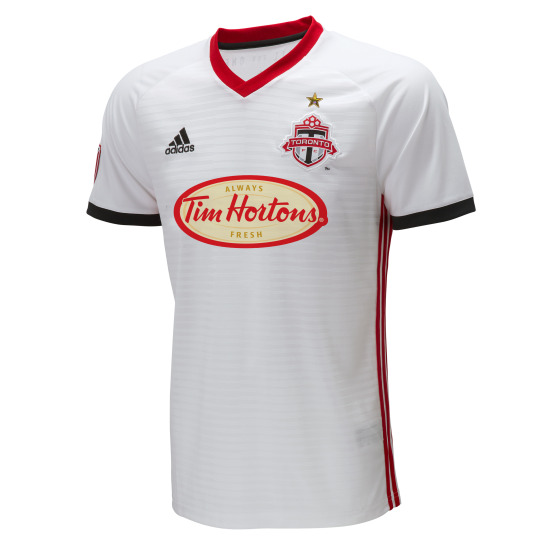
Vancouver Whitecaps — Lululemon
Set on the water, with an amazing mountain view, you couldn’t say a bad word about how great Vancouver looks. It’s straight-up cool. And local company Lululemon makes activewear that looks similarly awesome. We are officially here for MLS yoga wear.

————
This post was a collaboration between Where Is Football and Tap In Guide. Check out their stuff—it’s awesome.
A special thanks to Tap In’s graphic designer Mike Arney for helping bring our ideas to life, and to our buddy Ryan Rosenblatt for developing those ideas with us.
As always, you can follow us on Instagram @whereisfootball.
37 notes
·
View notes
Text
RSAs: Are they living up to the promise? It depends
Expanded text ads (ETAs) aren’t going anywhere just yet, but Google’s latest experiment to make responsive search ads (RSAs) the default option is a sign of where things are heading. Responsive search ads are indicative of the broader shift to machine learning and automation, where bids, ads, landing pages, etc. are powered by algorithms designed to predict better outcomes than we can manually.
The promise of RSAs is that when you feed the system a bunch of unique headlines and descriptions, it can test and learn to predict the right combination for each search. Google also talks about the convenience of RSAs, the fact that they can show more text than ETAs and their opportunity to compete in more auctions when there are high quality score combinations of copy that match more queries.
With the introduction of RSAs, Google began encouraging advertisers to move away from “overly fixating” on click-through and conversion rates and instead focus on the incremental lift in clicks and conversions from RSAs. Tinuiti’s director of research Andy Taylor wrote about this on Search Engine Land last year and concluded that click-through and conversion rates in fact don’t matter. Why? “Any conversion rate can be acceptable, so long as the price paid for the clicks results in an effective cost per conversion,” he wrote.
By design, comparing the performance of RSAs to ETAs is tricky because they are two different animals. If you’re evaluating RSAs on incrementality, their conversion rates might be lower than ETAs but the efficiency of those conversions might be better — lower cost per conversion, higher margin and/or lifetime value — and come from impressions your ETAs weren’t eligible for. But measuring this is far from straightforward because the reporting on RSAs is limited and there’s no way to easily tie a query to an ad much less an RSA combination. Frederick Vallaeys of Optmyzr explains how to measure the impact of RSAs with query mix analysis (one more reason to lament the loss of longtail search query data) using a script, but Google doesn’t provide incremental measurement for RSAs natively in the UI.
After we learned about Google’s RSA test, I asked marketers what they’re seeing from this ad format as we head into the fourth quarter.
RSAs are not an easy button
Brad Geddes, co-founder of ad testing platform Adalysis, said more advertisers are using RSAs, but overall, he says, looking at any metric such as “CTR, conversion rate, CPI, ROAS, etc., and ETAs win much more often than RSAs.”
Geddes said advertisers that follow ad copy best practices do see RSAs performing closer to ETAs. “The only time it’s close is when the advertiser is testing RSAs that have essentially the same lines in the RSA (and never more than 6 headlines, often with 1 pinned) as they do in the text ad.”
Geddes says the way RSAs are framed as being a great simplifier is also a problem. “One of the big benefits that is touted for RSAs is time savings. This has led many advertisers to just use the same RSA in many ad groups since Google said it’ll figure out how to serve the ads. This is also where some of the performance issues of RSAs come into play.”
Account structure still matters
Account structure and ad group organization makes a difference, too. “When the account is not well set up or the same ads are used in many ad groups (or worse the entire campaign) so that the ads are not as relevant as they should be within an ad group, then RSAs often outperform ETAs,” Geddes added. Google limits the number of enabled RSAs in an ad group to three — two is not recommended. “It seems Google has some real ad serving and machine learning issues when an ad group has multiple RSAs in it.”
“The RSA news is disappointing,” said Atlanta-based digital marketing agency consultant Josh B., “but the biggest key I can provide is to ensure that your headlines and descriptions are still relevant to the ad group. I know that’s search 101, but I don’t trust Google to ensure that the best ads will be served and I really ensure that I turn off ‘auto-applied’ ads when I create a new account.”
Doug Thomas, search specialist at Trailblaze marketing agency, says he’s just starting to come around to RSAs. “The way to approach RSAs is a shift in mindset from testing individual copy to testing copy strategy,” he said. In testing, “At the ad group level, our largest-by-impressions campaign gained about 12% IS [impression share] and our largest ad group in that campaign gained about 18% IS when we implemented RSAs with that simpler method of multiple copy strategies in one RSA,” said Thomas.
Pay attention to pinning
Andrea Cruz, digital marketing agency manager at Komarketing agency, and others stressed the usefulness of pinning headlines. “Generally I am not a fan of them but one tip that I always share is to make sure the CTA is pinned in one of the headlines. Because you probably don’t want to have an ad that doesn’t state what you are going to get or what the action to take on the page is I have found helps with conversion rate.”
Azeem Digital says he maxes out every headline and description when testing RSAs and pins headlines when he wants to ensure the brand always shows, for example. “I’ve had some surprising results with headlines that I didn’t expect to do well outperforming the rest,” he said.
Keep testing
Advertisers should be testing RSAs to understand when and how to use them or find copy to optimize their ETA ads, agrees Geddes. “If Google ever gives us proper RSA stats and reporting, then their usage will also increase. As Google isn’t being transparent with conversion metrics based upon how the RSAs are being rendered, it is also hard for some people to trust them.”
Geddes expects that when ETAs do go away, “a lot of accounts will see a decline in performance…and others will just recreate the ETA experience through pinning ad lines.” He said many large clients have asked them to create a feature that essentially allows them to recreate ETAs with pinning. “That’s how much many of our larger advertisers prefer ETAs to RSAs,” he said.
About The Author

Ginny Marvin is Third Door Media’s Editor-in-Chief, running the day to day editorial operations across all publications and overseeing paid media coverage. Ginny Marvin writes about paid digital advertising and analytics news and trends for Search Engine Land, marketing agency Land and MarTech Today. With more than 15 years of marketing agency experience, Ginny has held both in-house and agency management positions. She can be found on Twitter as @ginnymarvin.
Website Design & SEO Delray Beach by DBL07.co
Delray Beach SEO
source http://www.scpie.org/rsas-are-they-living-up-to-the-promise-it-depends/ source https://scpie1.blogspot.com/2020/09/rsas-are-they-living-up-to-promise-it.html
0 notes
Text
RSAs: Are they living up to the promise? It depends
Expanded text ads (ETAs) aren’t going anywhere just yet, but Google’s latest experiment to make responsive search ads (RSAs) the default option is a sign of where things are heading. Responsive search ads are indicative of the broader shift to machine learning and automation, where bids, ads, landing pages, etc. are powered by algorithms designed to predict better outcomes than we can manually.
The promise of RSAs is that when you feed the system a bunch of unique headlines and descriptions, it can test and learn to predict the right combination for each search. Google also talks about the convenience of RSAs, the fact that they can show more text than ETAs and their opportunity to compete in more auctions when there are high quality score combinations of copy that match more queries.
With the introduction of RSAs, Google began encouraging advertisers to move away from “overly fixating” on click-through and conversion rates and instead focus on the incremental lift in clicks and conversions from RSAs. Tinuiti’s director of research Andy Taylor wrote about this on Search Engine Land last year and concluded that click-through and conversion rates in fact don’t matter. Why? “Any conversion rate can be acceptable, so long as the price paid for the clicks results in an effective cost per conversion,” he wrote.
By design, comparing the performance of RSAs to ETAs is tricky because they are two different animals. If you’re evaluating RSAs on incrementality, their conversion rates might be lower than ETAs but the efficiency of those conversions might be better — lower cost per conversion, higher margin and/or lifetime value — and come from impressions your ETAs weren’t eligible for. But measuring this is far from straightforward because the reporting on RSAs is limited and there’s no way to easily tie a query to an ad much less an RSA combination. Frederick Vallaeys of Optmyzr explains how to measure the impact of RSAs with query mix analysis (one more reason to lament the loss of longtail search query data) using a script, but Google doesn’t provide incremental measurement for RSAs natively in the UI.
After we learned about Google’s RSA test, I asked marketers what they’re seeing from this ad format as we head into the fourth quarter.
RSAs are not an easy button
Brad Geddes, co-founder of ad testing platform Adalysis, said more advertisers are using RSAs, but overall, he says, looking at any metric such as “CTR, conversion rate, CPI, ROAS, etc., and ETAs win much more often than RSAs.”
Geddes said advertisers that follow ad copy best practices do see RSAs performing closer to ETAs. “The only time it’s close is when the advertiser is testing RSAs that have essentially the same lines in the RSA (and never more than 6 headlines, often with 1 pinned) as they do in the text ad.”
Geddes says the way RSAs are framed as being a great simplifier is also a problem. “One of the big benefits that is touted for RSAs is time savings. This has led many advertisers to just use the same RSA in many ad groups since Google said it’ll figure out how to serve the ads. This is also where some of the performance issues of RSAs come into play.”
Account structure still matters
Account structure and ad group organization makes a difference, too. “When the account is not well set up or the same ads are used in many ad groups (or worse the entire campaign) so that the ads are not as relevant as they should be within an ad group, then RSAs often outperform ETAs,” Geddes added. Google limits the number of enabled RSAs in an ad group to three — two is not recommended. “It seems Google has some real ad serving and machine learning issues when an ad group has multiple RSAs in it.”
“The RSA news is disappointing,” said Atlanta-based digital marketing agency consultant Josh B., “but the biggest key I can provide is to ensure that your headlines and descriptions are still relevant to the ad group. I know that’s search 101, but I don’t trust Google to ensure that the best ads will be served and I really ensure that I turn off ‘auto-applied’ ads when I create a new account.”
Doug Thomas, search specialist at Trailblaze marketing agency, says he’s just starting to come around to RSAs. “The way to approach RSAs is a shift in mindset from testing individual copy to testing copy strategy,” he said. In testing, “At the ad group level, our largest-by-impressions campaign gained about 12% IS [impression share] and our largest ad group in that campaign gained about 18% IS when we implemented RSAs with that simpler method of multiple copy strategies in one RSA,” said Thomas.
Pay attention to pinning
Andrea Cruz, digital marketing agency manager at Komarketing agency, and others stressed the usefulness of pinning headlines. “Generally I am not a fan of them but one tip that I always share is to make sure the CTA is pinned in one of the headlines. Because you probably don’t want to have an ad that doesn’t state what you are going to get or what the action to take on the page is I have found helps with conversion rate.”
Azeem Digital says he maxes out every headline and description when testing RSAs and pins headlines when he wants to ensure the brand always shows, for example. “I’ve had some surprising results with headlines that I didn’t expect to do well outperforming the rest,” he said.
Keep testing
Advertisers should be testing RSAs to understand when and how to use them or find copy to optimize their ETA ads, agrees Geddes. “If Google ever gives us proper RSA stats and reporting, then their usage will also increase. As Google isn’t being transparent with conversion metrics based upon how the RSAs are being rendered, it is also hard for some people to trust them.”
Geddes expects that when ETAs do go away, “a lot of accounts will see a decline in performance…and others will just recreate the ETA experience through pinning ad lines.” He said many large clients have asked them to create a feature that essentially allows them to recreate ETAs with pinning. “That’s how much many of our larger advertisers prefer ETAs to RSAs,” he said.
About The Author

Ginny Marvin is Third Door Media’s Editor-in-Chief, running the day to day editorial operations across all publications and overseeing paid media coverage. Ginny Marvin writes about paid digital advertising and analytics news and trends for Search Engine Land, marketing agency Land and MarTech Today. With more than 15 years of marketing agency experience, Ginny has held both in-house and agency management positions. She can be found on Twitter as @ginnymarvin.
Website Design & SEO Delray Beach by DBL07.co
Delray Beach SEO
source http://www.scpie.org/rsas-are-they-living-up-to-the-promise-it-depends/ source https://scpie.tumblr.com/post/628865685360181248
0 notes
Text
RSAs: Are they living up to the promise? It depends
Expanded text ads (ETAs) aren’t going anywhere just yet, but Google’s latest experiment to make responsive search ads (RSAs) the default option is a sign of where things are heading. Responsive search ads are indicative of the broader shift to machine learning and automation, where bids, ads, landing pages, etc. are powered by algorithms designed to predict better outcomes than we can manually.
The promise of RSAs is that when you feed the system a bunch of unique headlines and descriptions, it can test and learn to predict the right combination for each search. Google also talks about the convenience of RSAs, the fact that they can show more text than ETAs and their opportunity to compete in more auctions when there are high quality score combinations of copy that match more queries.
With the introduction of RSAs, Google began encouraging advertisers to move away from “overly fixating” on click-through and conversion rates and instead focus on the incremental lift in clicks and conversions from RSAs. Tinuiti’s director of research Andy Taylor wrote about this on Search Engine Land last year and concluded that click-through and conversion rates in fact don’t matter. Why? “Any conversion rate can be acceptable, so long as the price paid for the clicks results in an effective cost per conversion,” he wrote.
By design, comparing the performance of RSAs to ETAs is tricky because they are two different animals. If you’re evaluating RSAs on incrementality, their conversion rates might be lower than ETAs but the efficiency of those conversions might be better — lower cost per conversion, higher margin and/or lifetime value — and come from impressions your ETAs weren’t eligible for. But measuring this is far from straightforward because the reporting on RSAs is limited and there’s no way to easily tie a query to an ad much less an RSA combination. Frederick Vallaeys of Optmyzr explains how to measure the impact of RSAs with query mix analysis (one more reason to lament the loss of longtail search query data) using a script, but Google doesn’t provide incremental measurement for RSAs natively in the UI.
After we learned about Google’s RSA test, I asked marketers what they’re seeing from this ad format as we head into the fourth quarter.
RSAs are not an easy button
Brad Geddes, co-founder of ad testing platform Adalysis, said more advertisers are using RSAs, but overall, he says, looking at any metric such as “CTR, conversion rate, CPI, ROAS, etc., and ETAs win much more often than RSAs.”
Geddes said advertisers that follow ad copy best practices do see RSAs performing closer to ETAs. “The only time it’s close is when the advertiser is testing RSAs that have essentially the same lines in the RSA (and never more than 6 headlines, often with 1 pinned) as they do in the text ad.”
Geddes says the way RSAs are framed as being a great simplifier is also a problem. “One of the big benefits that is touted for RSAs is time savings. This has led many advertisers to just use the same RSA in many ad groups since Google said it’ll figure out how to serve the ads. This is also where some of the performance issues of RSAs come into play.”
Account structure still matters
Account structure and ad group organization makes a difference, too. “When the account is not well set up or the same ads are used in many ad groups (or worse the entire campaign) so that the ads are not as relevant as they should be within an ad group, then RSAs often outperform ETAs,” Geddes added. Google limits the number of enabled RSAs in an ad group to three — two is not recommended. “It seems Google has some real ad serving and machine learning issues when an ad group has multiple RSAs in it.”
“The RSA news is disappointing,” said Atlanta-based digital marketing agency consultant Josh B., “but the biggest key I can provide is to ensure that your headlines and descriptions are still relevant to the ad group. I know that’s search 101, but I don’t trust Google to ensure that the best ads will be served and I really ensure that I turn off ‘auto-applied’ ads when I create a new account.”
Doug Thomas, search specialist at Trailblaze marketing agency, says he’s just starting to come around to RSAs. “The way to approach RSAs is a shift in mindset from testing individual copy to testing copy strategy,” he said. In testing, “At the ad group level, our largest-by-impressions campaign gained about 12% IS [impression share] and our largest ad group in that campaign gained about 18% IS when we implemented RSAs with that simpler method of multiple copy strategies in one RSA,” said Thomas.
Pay attention to pinning
Andrea Cruz, digital marketing agency manager at Komarketing agency, and others stressed the usefulness of pinning headlines. “Generally I am not a fan of them but one tip that I always share is to make sure the CTA is pinned in one of the headlines. Because you probably don’t want to have an ad that doesn’t state what you are going to get or what the action to take on the page is I have found helps with conversion rate.”
Azeem Digital says he maxes out every headline and description when testing RSAs and pins headlines when he wants to ensure the brand always shows, for example. “I’ve had some surprising results with headlines that I didn’t expect to do well outperforming the rest,” he said.
Keep testing
Advertisers should be testing RSAs to understand when and how to use them or find copy to optimize their ETA ads, agrees Geddes. “If Google ever gives us proper RSA stats and reporting, then their usage will also increase. As Google isn’t being transparent with conversion metrics based upon how the RSAs are being rendered, it is also hard for some people to trust them.”
Geddes expects that when ETAs do go away, “a lot of accounts will see a decline in performance…and others will just recreate the ETA experience through pinning ad lines.” He said many large clients have asked them to create a feature that essentially allows them to recreate ETAs with pinning. “That’s how much many of our larger advertisers prefer ETAs to RSAs,” he said.
About The Author

Ginny Marvin is Third Door Media’s Editor-in-Chief, running the day to day editorial operations across all publications and overseeing paid media coverage. Ginny Marvin writes about paid digital advertising and analytics news and trends for Search Engine Land, marketing agency Land and MarTech Today. With more than 15 years of marketing agency experience, Ginny has held both in-house and agency management positions. She can be found on Twitter as @ginnymarvin.
Website Design & SEO Delray Beach by DBL07.co
Delray Beach SEO
source http://www.scpie.org/rsas-are-they-living-up-to-the-promise-it-depends/
0 notes
Text
Finding Answers Through Data Collection (RDL1 IV d-f)
Conducting an Interview An interview is “a purposive face-to-face encounter, usually between two parties (an interviewer and an interviewee), in order to exchange information” (Miranda-Plata, et al., 2006). (However, because of modern comunication technology, interviews can also be not "face-to-face". Interviews may be conducted over the telephone, chat, or video call.) The interview is one of the most common data-gathering techniques, and used in qualitative research (the other being the survey, used in quantitative research). “By talking to people who have the information [that] you need, you can enrich your knowledge about the topic you are working on”. An interview typically has three stages: the pre-interview stage, the interview proper, and the post-interview stage. The pre-interview stage 1. Determine the purpose of your interview. Determine the specific objectives in conducting your interview: What will you use the interview for? How will you use the information? 2. Research the topic. Read in order to gain background knowledge on your topic. This will help you to be able to ask the right questions. 3. Choose your interviewee. Determine who is/are the best people to interview. Determine their availability, their knowledge of the topic, and whether they may freely share the information that you need. 4. Prepare for the interview. Make arrangements for the interview, for example, a letter of request, a call to the interviewee's office, and recording equipment. 5. Prepare an interview guide. An interview guide is a research instrument (see previous lesson) that contains questions to be asked by the interviewer/researcher. Determine how to phrase the questions in order to extract the information that you need. The interview proper The interview proper has three basic parts: 1) the opening, 2) the body, and 3) the closing. 1. The opening. This is when the tone of the interview is set. Aim for a positive atmosphere right from the beginning. This will pave a smooth path for communication. Establish rapport, i.e, goodwill between you and your interviewee. Make a good impression. Also, set the foundation for the interview by a) introducing yourself/yourselves (“We are senior high school students conducting an interview for our Research subject”); b) stating your purpose ('We want to find out more about depression”, etc.) and c) describing what will be covered in the interview, including the topics (“We would like to talk about causes, symptoms, treatment, and prevention of malaria”), and time limit. 2. The body. This is the main part of the interview where you, the researchers, ask the questions. Remember that the prepared questions in the interview guide only serves as a guide and should not be seen as the only questions that may be asked during the interview. (See “Types of questions” below.) Your prepared list of questions should also not be see as the strict sequence that should be followed. Follow the interviewee's lead on where the discussion goes, and yet use your interview guide if the discussion get sidetracked. You must research this well. 3. The closing. Do not neglect the closing part of the interview. Aim to leave with a positive attitude to the interviewee. Signal the conclusion (“And for my/our final question...”). Provide a summary statement by reviewing the points that were discussed. Make sure that your interview notes are accurate. Finally, show appreciation and courtesy to your interviewee for the time and knowledge he or she has shared. The post-interview stage 1. Arrange for a follow-up session, if needed. Make your interviewee aware of his/her valuable contribution to your research. Maintain the goodwill that was established during the interview so that you will be able to arrange a follow-up session in case you need to clarify some information pertinent to your research. 2. Prepare the interview report. Sort through the information gathered during the interview. Identify the information need for your research. Recall the purpose for conducting the interview. Make sure that you present different perspectives on the topic at hand. (See “Writing Chapter IV: Results and Discussion” below.) Types of Interview Questions 1. Open-ended questions are broad questions which can be answered freely by the interviewee: “How did you get started with your business?” “How would you describe your dream job?” 2. Close-ended questions call for restricted answers, i.e., specific answers: “How many languages do you speak?” “Do you agree with amending the Constitution?” 3. Primary questions are those that introduce new topics or other aspects within the same topic: “What makes digital photography fascinating to you?” 4. Secondary questions are those that help the interviewee clarify or elaborate on responses which may not have been clear or complete: “Can you please give an example of that?” “What do you mean by the word, 'esoteric'?” “Did you say 'poorer' or 'purer'?” 5. Neutral questions ask for simple, clear-cut answers. These is the type that interviewers should ask. “What is it like being a girl studying engineering?” “What are the latest developments in your field?” 6. Leading questions are those that direct (or force) the interviewee make expected responses. These should generally be avoided. “Noontime shows are stupid, aren't they?” (You are making the person agree with you.) “Is it true that you did not vote for our president? Who did you vote for?” (You are forcing a person to say something that is supposed to be a secret.) “Where were you when you murdered the victim?” (You are already assuming that the suspect is actually guilty.) 7. Loaded questions are those “loaded” with some negative aspect of the interviewee, and thus highly inappropriate. “How can you stand being around a bunch of idiots?” (You are calling his/her friends “idiots”.) “What ever happened to the corruption charges against you?” “When the aliens to you up on their spaceship, did they do anything sexual to you?” (From the movie “Independence Day”, 1995.) Tips in Conducting an Interview 1. Contact the person you wish to interview ahead of time. 2. Get permission first before using any recording equipment (e.g., voice recorder, video cameras). Research is ethical! 3. Check if your recording equipment is working properly. 4. Take down notes during the interview. Do not rely on electronic recording equipment. 5. Listen attentively during the interview. Show your interviewee that you are interested. Avoid doing other things during the interview, such as browsing your phone. 6. Ask only one question at a time. 7. Tactfully redirect the interviewee if they stray away from the topic. 8. After the interview, send your interviewee a thank-you note (or a small token of appreciation). WRITING CHAPTER IV: RESULTS AND DISCUSSION The fourth chapter of a thesis or research paper is called Results and Discussion. In a qualitative research paper, this chapter presents the results of the interview. There is no fixed sections in this chapter. When writing this chapter, consider: 1) You intended audience (i.e, your teacher or research panel); and 2) your teacher's requirements for the subject. Begin with a brief background about the interview situation (When? Where?) and the interviewee(s). Present the interview in the order that the questions are presented in the interview guide. Give the main points discussed during the interview. Paraphrase or summarize the responses of your interviewee(s). Use quotations only if the interviewee said something particularly striking. Quotations provide flavor to the interview report. Ensure the smooth flow of ideas by using transitional devices (such as first, next, then, meanwhile, finally, and others). The closing should reinforce the highlights of the interview by summarizing the key points. R E F E R E N C E S Miranda-Plata, S., Beltran-Montenegro, M. C., Rañosa-Madrunio, M. B., Valdez, P. N. M., Gabriel, C. D., Calero, E. R., et al. (2006). Research: Process and product workbook. Biñan, Laguna: Trailblazer Publications.
1 note
·
View note
Text
2017's Hottest Melbourne Fitness Classes
Fitness trends come and go like fashion - one minute Zumba is cool, the next it’s free on Tuesdays for seniors. Only the really good ones stick around year after year and become a staple, like your white button-up shirt with a pair of great jeans or the Little Black Dress.
Here in 2017 we consider ourselves a discerning bunch, so when we see that the hottest fitness classes in Melbourne are tried and true for many years, we know that they’re worth it. The fitness clubs that offer these classes aren’t looking for trends, they’ve found that timeless quality that makes these classes unbeatable. Read on for more about 2017’s trailblazing fitness classes at centres across Melbourne.
Barre:
Barre is a darling child among fitness fanatics - using small, controlled movements to mimic the training of a ballerina, you can zero in on targeted muscle groups and get a full-body workout that will keep you coming back for more! Barre was designed by Lotte Berk in the 1970’s, when she began developed a system of exercise that incorporates dance fitness training with principles of Pilates - Barre has held on to its reputation for nearly forty years, so if you want to get lean, strong, and flexible like a dancer, find your nearest Barre.
Boxing:
Boxing has always been a popular sport so it should come as no surprise that the fitness classes are just as sought after. Based on the sport science principles of MMA, boxing classes give you functional skills as well as all of the strength, agility, and cardiovascular training that you could ask for. With superstar celebrities from Gigi Hadid to Adriana Lima all swearing by boxing classes, we know it’s worth it. You might want to find classes that stay close to the sport so you can practise your technique, or perhaps you’d rather try a boxing fitness class. These incorporate the methodology of boxing with other training methods to deliver a kick-ass workout that will get your muscles into overdrive and your heart pumping.
H.I.I.T:
High-intensity interval training consists of short, sharp bursts of exercise that are designed to push you to your limit, before an interval of rest for you to recuperate before the next round. This form of exercise has been around for years but the benefits are still being discovered - just recently it has been named the best anti-ageing exercise you can do, by a science magazine. So we trust them. Train for endurance, agility, and strength with H.I.I.T, and enjoy the serious boost of energy this unique training system offers.
Pilates:
Pilates is almost impossible to fault. Having been carefully and systematically designed by Joseph Pilates after his own early life was plagued by ailments, Pilates has helped to heal countless people across the globe for close to 100 years and continues to hold up to even the most severe scrutiny. The beautiful part is how closely it was engineered to match our natural movements - Pilates doesn’t ask much more of you than regular day-to-day movement, but it does ask that you do it with precision and attention, with regular breath and a solid core. It can be adjusted to suit the needs of people of any shape, size, or ability, but everyone can experience a challenging workout and that rewarding sensation afterwards. There’s a reason Pilates has been around longer than most of us, give it a go and find out why!
Yoga:
One of the most timeless forms of exercise, Yoga was actually designed to prepare monks for hours of sitting in meditation. Yoga attracts many people because of its ability to blend the physical with the emotional and spiritual. Even if the spiritual side isn’t for you, the benefits of mindfulness are countless. There are different styles of Yoga so you can choose the best one for you, whether it’s fast or slow or meditative, and each one offers the opportunity to turn your attention inwards and be present in your body while training your strength, endurance, flexibility, and balance.
0 notes